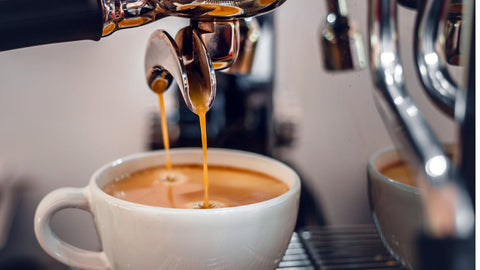
The Ultimate Guide to Choosing an Espresso Machine for Beginners
Why Invest in a Home Espresso Machine?
Owning an espresso machine for home use isn't just about convenience; it's about the control and quality that comes with making espresso at home. You can tailor each cup to suit your exact preferences—from the grind size and water temperature to the extraction time. Moreover, an espresso machine is a valuable tool for exploring various coffee beans and brewing techniques, elevating your coffee experience to new levels.
According to the Specialty Coffee Association, home brewing has increased by 40% since 2020, with espresso machines being the fastest-growing category among coffee enthusiasts.
Types of Espresso Machines: Which One is Right for You?
Understanding the different types of espresso machines for beginners is the first step in your journey. Espresso machines generally fall into four main categories: manual, semi-automatic, automatic, and super-automatic.
Manual Espresso Machines (Lever Espresso Machines)
Manual machines require you to control each step, from tamping to timing. They provide an unmatched level of control and customization, making them a popular choice among experienced baristas. However, they come with a steep learning curve, making them less ideal for complete beginners looking for their first espresso machine.
Semi-Automatic Espresso Machines
Semi-automatic espresso machines for beginners give you control over certain aspects, like grinding and tamping, while automating others, like temperature control. They strike a perfect balance between control and convenience, making them ideal for beginners who want hands-on experience without being overwhelmed.
Automatic Espresso Machines
Automatic espresso machines are designed to take the guesswork out of espresso making. These machines handle water flow and timing, so you can focus on adjusting grind size and tamping pressure. They're easy to use and a good choice for those just starting their home brewing journey.
Super-Automatic Espresso Machines
These all-in-one espresso machines do it all, from grinding beans to frothing milk. They're the most convenient option and a favorite for those who want café-quality espresso without hassle. However, they're often pricier and may not allow for as much customization as other types.
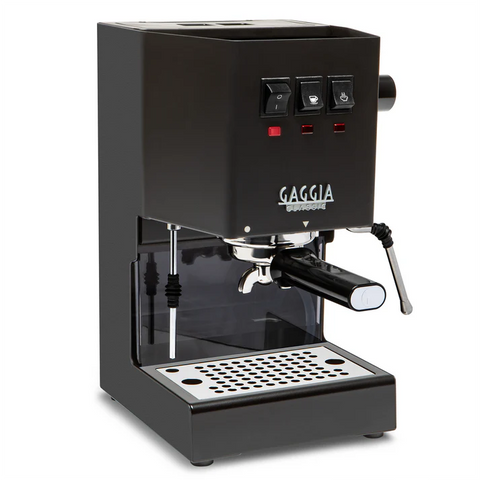
Product Suggestion
Check out the Gaggia Classic Pro Semi-Automatic Espresso Machine, a fantastic choice for beginners who want control without the complexity.
Key Features to Look For in Your First Espresso Machine
Once you've decided on the type, consider the features that make a machine beginner-friendly and suitable for your lifestyle. Here are some essential features to look for in the best beginner espresso machine:
1. Coffee Grinder: Integrated or Separate?
An espresso grinder is crucial to the quality of your shot. Machines with built-in grinders can save counter space and simplify the brewing process, while a separate grinder allows for more precise control over grind size and consistency.
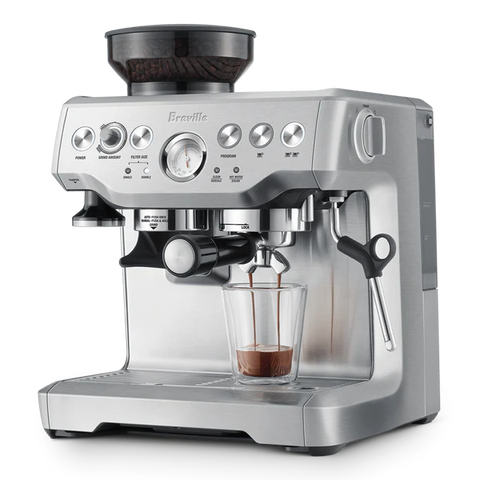
Product Suggestion:
Try the Breville Barista Express Espresso Machine , which comes with a built-in grinder, making it ideal for beginners.
2. Milk Frothing Capability for Lattes and Cappuccinos
If you enjoy milk-based espresso drinks like lattes or cappuccinos, ensure the machine has a steam wand for milk frothing. Some beginner-friendly machines offer automatic milk frothing, while others have a manual steam wand for a more hands-on approach to creating microfoam.
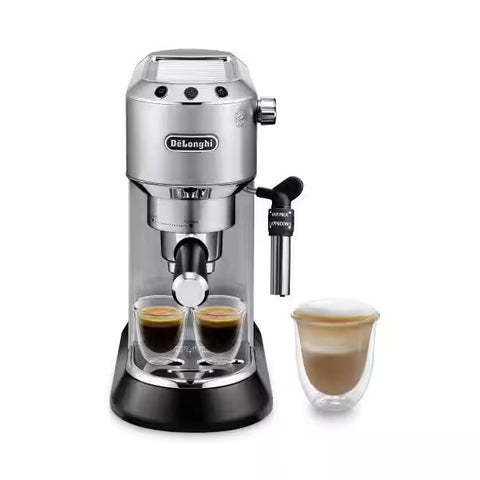
Product Suggestion:
Explore the DeLonghi Dedica Deluxe Espresso Machine, featuring a manual frothing wand, great for learning the art of frothing milk.
3. Boiler Type and Heating Time
Espresso machine boiler systems can have a single or dual boiler setup. Single boilers are budget-friendly and sufficient for most beginners, though dual boilers allow for simultaneous espresso extraction and milk frothing. Additionally, look for machines with fast heating times if you're often short on time in the morning.
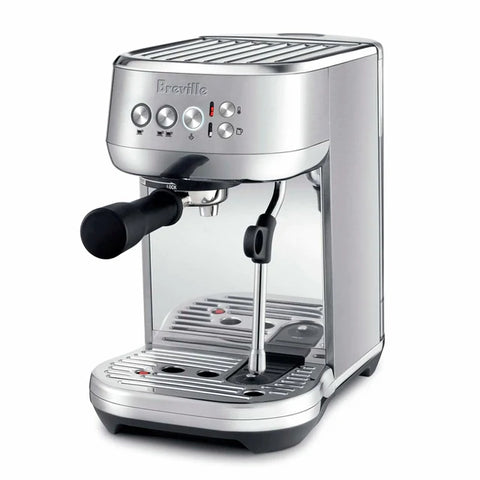
Product Suggestion:
Consider the Breville Bambino Plus , a beginner-friendly machine that heats up in seconds.
4. Water Reservoir Capacity
If you're planning to make several cups a day, choose a machine with a larger water reservoir to avoid constant refilling. Most home espresso machines come with reservoirs ranging from 32 to 67 ounces.
5. Maintenance and Cleaning Features
Machines with removable parts are generally easier to clean. Some models even offer automatic cleaning cycles, which is a great feature for beginners who want low-maintenance espresso brewing.
Budget Considerations: How Much Should You Spend on Your First Espresso Machine?
Affordable espresso machines for beginners come in a wide price range, from under $200 to over $2,000. When choosing your first machine, consider setting a realistic budget and looking at long-term value. Investing in a quality beginner machine will provide you with better results and a more enjoyable experience, helping you avoid the pitfalls of cheaply made models.
Price ranges for different types:
- Entry-level machines: $150-$400
- Mid-range machines: $400-$800
- High-end beginner machines: $800-$1,500
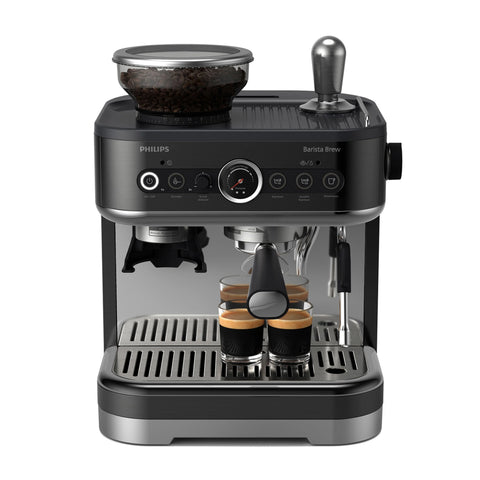
Product Suggestion:
The Philips 3200 Series Super-Automatic Espresso Machine is a great budget-friendly option for beginners, offering excellent features for its price.
Practical Tips for Choosing and Using Your Espresso Machine
After narrowing down your choice based on type and features, here are some practical tips to enhance your home espresso brewing journey:
1. Start with High-Quality Coffee Beans
Your espresso quality will always depend on the coffee beans for espresso you use. Opt for freshly roasted, high-quality coffee, like our Bali Blue, a medium-dark roast with rich chocolate and molasses notes that are perfect for espresso extraction.
2. Practice Makes Perfect Espresso
Learning the art of espresso brewing at home is a journey. Experiment with grind size, tamping pressure, and extraction times. Over time, you'll develop an understanding of how these variables affect flavor profile and crema formation.
3. Don't Forget About the Coffee Grinder
The grinder is arguably as important as the espresso machine itself. Investing in a quality burr grinder for espresso will allow you to achieve consistent, fine grounds essential for a good espresso shot with proper extraction.
4. Clean and Maintain Regularly
Espresso machine maintenance requires regular cleaning to ensure optimal performance. Follow the manufacturer's instructions to keep your machine in excellent condition. For convenience, select a machine with easy-to-remove parts for thorough cleaning.
Common Mistakes to Avoid When Buying Your First Espresso Machine
Many beginners make these costly mistakes when purchasing their first home espresso machine:
- Buying too cheap: Machines under $100 rarely produce quality espresso
- Ignoring the grinder: A poor grinder will ruin even the best machine
- Forgetting about counter space: Measure your available space before buying
- Not considering maintenance: Some machines require extensive cleaning
- Overlooking warranty: Always check warranty terms and customer service
Final Thoughts: Making the Most of Your Espresso Journey
Choosing your first espresso machine is an exciting step toward enjoying café-quality coffee in the comfort of your own home. With so many options available, it's essential to find a machine that fits your lifestyle, budget, and coffee preferences. Whether you're looking for the hands-on experience of a semi-automatic machine or the convenience of a super-automatic, remember that each machine has unique benefits that make it suitable for different users.
For beginners, it's often best to start with a semi-automatic or automatic machine that allows you to get familiar with the basics while offering enough control to learn and grow. With the right espresso machine, grinder, and high-quality coffee beans like those available from Everyday People Coffee & Tea, you'll quickly discover the joy and satisfaction of crafting espresso drinks at home.
Don't be discouraged if it takes a few tries to perfect your technique—espresso brewing is an art and a science, and practice will only make each cup more rewarding. Research from the International Coffee Organization shows that home baristas typically achieve café-quality results after 3-4 weeks of regular practice.






